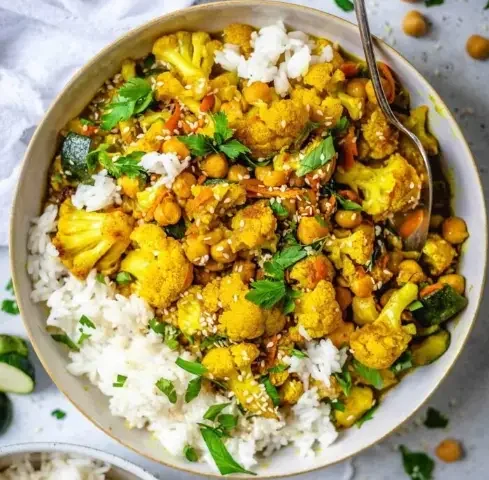Ingredients
Equipment
Method
- In a large pot, heat some coconut oil over medium heat. Then, add the shallots and cook them for about 5 minutes, stirring occasionally. Next, add the garlic, ginger, and serrano pepper and sauté them for another 2-3 minutes, stirring frequently.
- Stir in the curry paste and let it cook for another two minutes. Then, pour in the coconut milk and add the turmeric, maple syrup or coconut sugar (if using), and tamari. Mix well and simmer over medium heat.
- Reduce the heat slightly after the mixture starts to simmer, then add the cauliflower and chickpeas. Keep the heat low enough to maintain a gentle simmer, not a boil. This should be around low to medium-low on the stove.
- Simmer the cauliflower and chickpeas with the curry for 10-12 minutes on low heat, stirring now and then, to make them tender and flavorful. Avoid boiling the mixture.
- Now is the time to fine-tune the taste of the broth. You can add more coconut sugar if you want it sweeter, more soy if you want it saltier, and more turmeric if you want it earthier. You can also increase the amount of curry paste for more heat and a stronger curry flavor. Be generous with the seasonings – this curry should have a lot of flavor.
- You can enjoy this dish on its own, or with some rice, quinoa, or greens of your choice (optional). Add some extra flavor and texture with toppings like sesame seeds, cilantro, lime, or diced red onion (optional).
Notes
*Based on my research, the only difference between red and yellow curry paste is lemon juice and turmeric powder. So if you have yellow curry paste, use that and omit the extra turmeric (to taste). But if using red (as I suggest), simply include the turmeric as instructed.
Other recipes you might like:
The Best Curried Egg Salad
